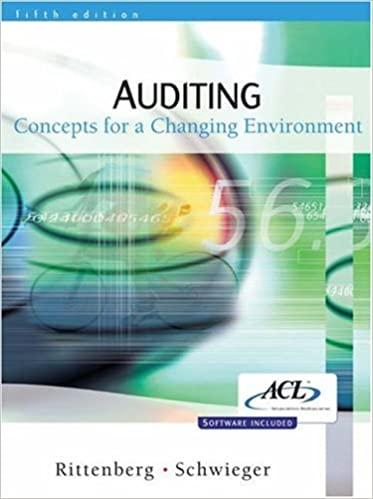In analyzing the reported income of General Motors Corporation, Abraham Briloff reported that General Motors made only
Question:
In analyzing the reported income of General Motors Corporation, Abraham Briloff reported that General Motors made only $22.8 million from the sale of cars:
General Motors reported only $22.8 million as the amount earned from the corporation's production and sale of vehicles and related products. The corresponding pre-tax and pre- equity earnings for the next year amounted to a whopping $4,971.5 million (just shy of $5 billion).'
Well, then, as the saying goes, 'where's the beef'? My response is that the two sets of data are incomparable, even beyond the drastic divergences in their magnitude. Here I want to go back to the $22.8 million toted up in calculating income. That 'tiny' sum included three items calling for special consideration. To wit:
1. That operating income included $305 million of LIFO inventory profits, i.e., the amount by which income was injected by reason of the company's decision to refrain from replac-ing certain of its LIFO inventory pools. For the next year, there was no such surfacing of suppressed LIFO profits.
2. The company's management opted to stay with FASB Statement No. 8 regarding Foreign Currency Translation (rather than shift to Statement 52). As a consequence, that year's in- come was enhanced by $348.4 million. The next year, the company's income was actually reduced by $52.3 million. Mind you, GM's decision to 'stand pat' on FASB 8 was entirely consistent with the election afforded by the subject of the FASB promulgation; and, it should go without saying, the auditors concurred in that option.
3. Footnote 4, regarding 'Other Income' in turn carried a little footnote informing the read- ers with 20/20 visual acuity that the company enjoyed a $48.7 million 'gain' from the early retirement of long-term debt. By such an inclusion, that sum was carried down into the $22.8 million operating income referred to above.
The critical point I am making, essentially as my opening gambit, is that with the auditor's concurrence, which they assured us was all in accordance with GAAP/GAAS, GM's income was swelled by $702.1 million as a consequence of management's decisions, essentially inde- pendent of the underlying 'economic realities.' Absent those management-induced injections the company would have been constrained to report a $679.3 million loss (pre-tax and pre- equity in unconsolidated subsidiaries).
... I will conclude this David-Goliath saga with the ultimate question, 'How unfair may the financial statements be and yet be deemed fair in accordance with GAAP?'7
Required
a. How does the auditor determine whether financial statements are fairly pre- sented when management can choose to manipulate the financial reporting as just described?
b. Is it possible for financial statements to be fairly presented in accordance with GAAP, yet at the same time not really be fairly presented? Explain.
c. A report by an AICPA commission suggested that the auditor needs to step back from a financial presentation to determine whether the financial state- ments, in their totality, present a misleading financial impression of the eco- nomic realities even if the statements are fairly presented according to GAAP. In your view of the accounting profession, what would be the advantages and disadvantages of such a proposal?
Step by Step Answer:

Auditing Concepts For A Changing Environment
ISBN: 9781284249286
5th Edition
Authors: Larry E. Rittenberg, Bradley J. Schwieger





